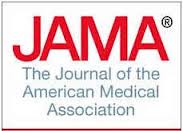 An article published in the Journal of the American Medical Association (JAMA) on February 26, 2013, discusses the incidence of breast cancer in the United States and concludes that the number of young women presenting with metastatic disease at initial diagnosis has been increasing over time. Given the subject matter of this article, YSC believes it is important to share with our constituents what this article says and what it means for young women diagnosed with breast cancer.
An article published in the Journal of the American Medical Association (JAMA) on February 26, 2013, discusses the incidence of breast cancer in the United States and concludes that the number of young women presenting with metastatic disease at initial diagnosis has been increasing over time. Given the subject matter of this article, YSC believes it is important to share with our constituents what this article says and what it means for young women diagnosed with breast cancer.
In “Incidence of Breast Cancer with Distant Involvement Among Women in the United States, 1976 to 2009,“ [hereinafter “JAMA article”] the authors examined data from the U.S. National Cancer Institute Surveillance, Epidemiology, and End Results (SEER) database to find trends among breast cancer diagnoses. The authors observed a “small but statistically significant increase in incidence of breast cancer with distant involvement [metastasis to distant location such as bone, brain, lung, etc.] for women aged 25 to 39 years” of age. (JAMA article, at 805). This increase accounted for the women who presented with metastatic (Stage IV) disease at time of initial diagnosis. According to the SEER 9 database, the incidence of women in the U.S. aged 25 to 39 who presented with metastatic disease at initial diagnosis went from 1.53 per 100,000 women in 1976 to 2.9 per 100,000 women in 2009. The authors do not know the cause of these results and admit that further studies to corroborate their findings are necessary.
So what does this study mean to YSC, to young women diagnosed with breast cancer, and to healthy young women? First, there is no cause for alarm or panic. As the authors of this article state, their observations need to be corroborated and if that can be done, then further research is needed to ascertain why these numbers appear to be rising. The JAMA article is a retrospective observational study, and as such, gives us very limited information. This study does not and cannot explain why the distant diagnoses may be rising in young women. As the authors admit, those diagnosed with distant disease at the time of their initial diagnosis is “relatively small.” We also need to bear in mind the limitations of retrospective surveillance data. SEER 9 data only captures 10% of the U.S. population from nine specific areas that may or may not be representative of the whole country.
How does this study affect young women already diagnosed with breast cancer? It doesn’t. This article does not address the risk of recurrence or metastasis for a young woman previously diagnosed with breast cancer. Its findings applied to metastatic disease at initial diagnosis and not recurrence or spread of disease.
How does this study affect healthy young women? The study does not warrant any change to YSC’s position that all young women should be familiar with their breasts, know what is normal for their body, and go to their healthcare provider if they find something that is not typical. As the JAMA study revealed, the incidence of localized and regional disease in 25 to 39 year olds has not changed since the 1970s. From 2005-2009, the median age at diagnosis for cancer of the breast was 61 years of age. Approximately 0.0% were diagnosed under age 20; 1.8% between 20 and 34; and 9.9% between 35 and 44. See http://seer.cancer.gov/statfacts/html/breast.html#incidence-mortality
Does this article show a need for breast cancer screening in women aged 25 to 39? No. Current screening methods are not effective in young women. Recent research calls into question the benefits of screening mammography for women under 50. Just last December, a paper by one of the JAMA article authors and Dr. Gilbert Welch showed the harms that mammography screening has caused over the last three decades. See https://blog.youngsurvival.org/?p=2046.
Last, but certainly not least, this study shows the need for young women to be informed about science, statistics and critical review of study reports and media summaries of those reports. If you are interested in learning more, we encourage you to consider attending Project LEAD, a training course offered by the National Breast Cancer Coalition, which is now accepting applications for its annual Institute. http://www.breastcancerdeadline2020.org/get-involved/training/project-lead/
Regardless of the exact number of young women diagnosed with metastatic disease at initial diagnosis, it is too many. There is an urgent need to study metastatic disease, especially in young women who are generally understudied and excluded from metastatic clinical trials. YSC has always emphasized the importance of researching breast cancer in young women and this article supports that need.
A comprehensive summary of the article, explanation and commentary can be found in YSC’s detailed statement.
YSC would like to thank Joy Simha for her input and assistance with developing this statement.
-----------------------------------------------------------------------------------------------------------



